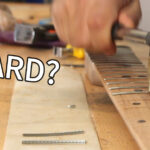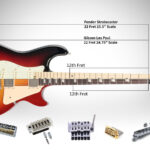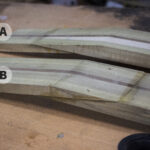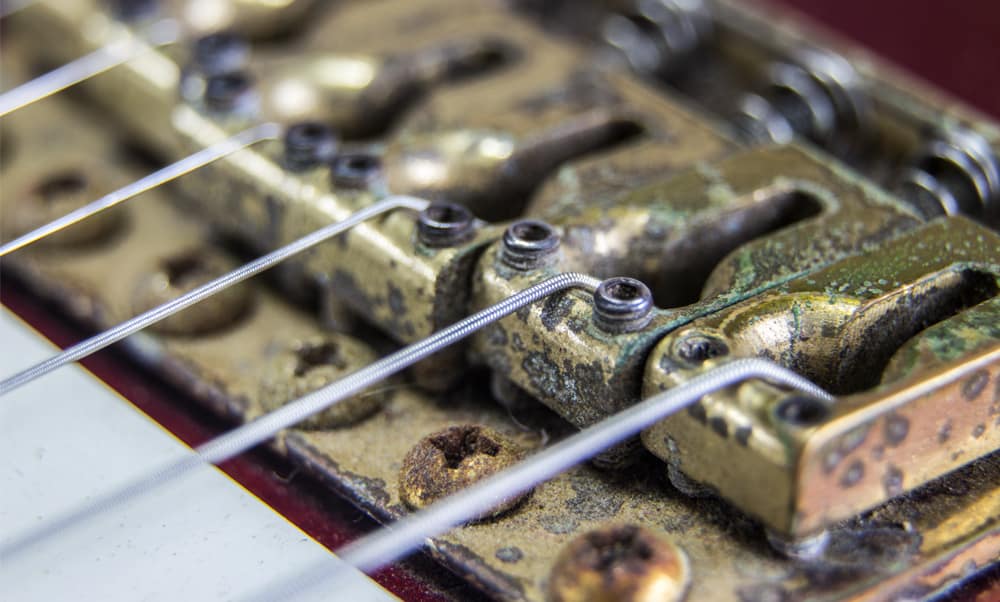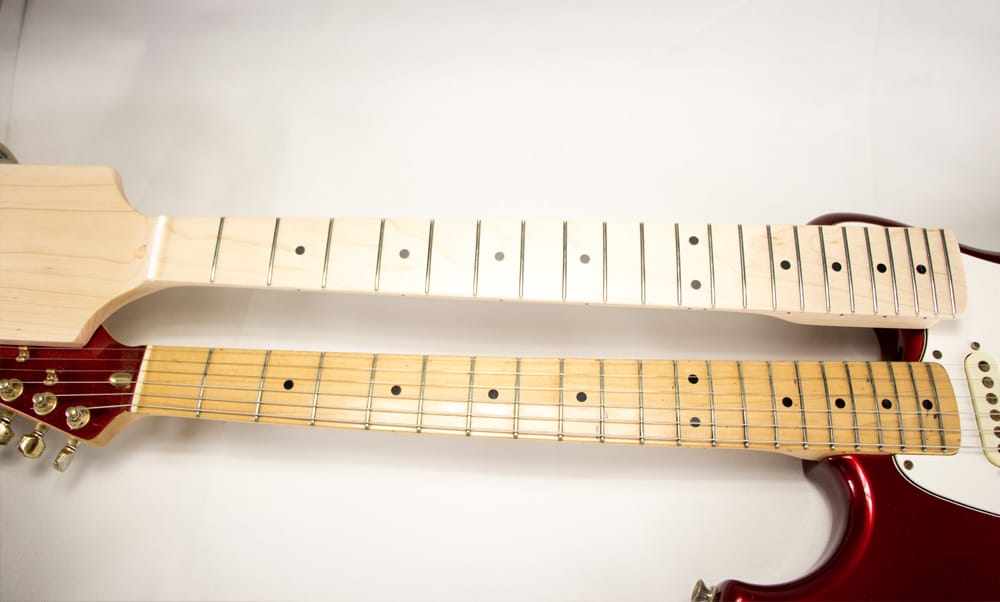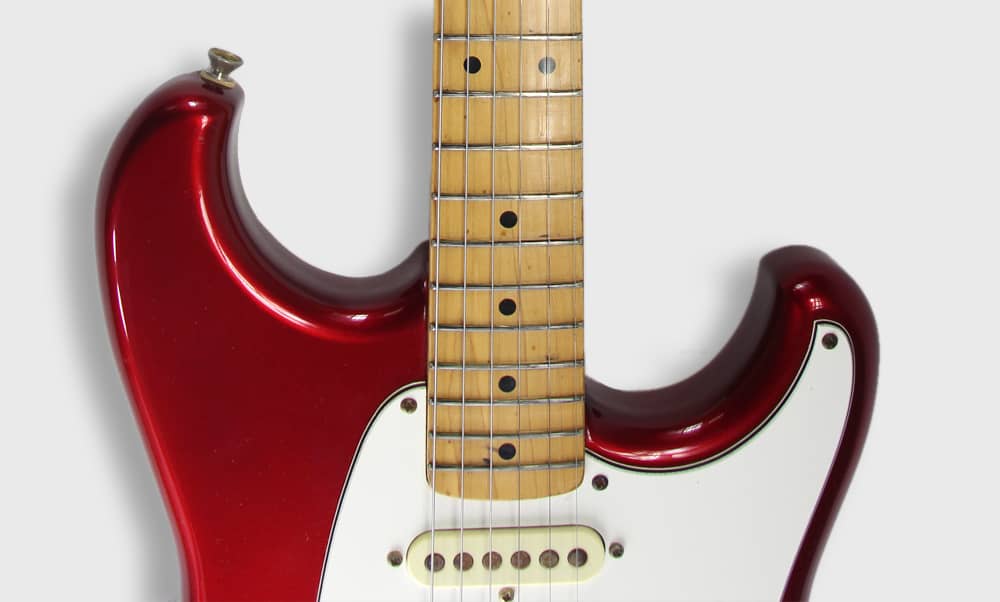Well, there may never be any practice that has caused as much steer for guitar players as guitar relicing, and in all honesty, it doesn’t even seem like the steer is going down any soon. In fact, if you are a guitar fan, or have listened to guitar stories in the past few months, you’d have noticed that the practice is getting even more controversial, especially with the popping up of builders and dedicated relicers almost everywhere. As a music lover, you probably might have picked your side in the debate, but in this article, we will expose a lot about the guitar relicing controversy from different viewpoints, as well as talk about some school of thoughts that will help you understand the arguments behind relicing.
First, why is Guitar Relicing Controversial?
Simply put, the controversy of guitar relicing started because a section of players let their aversion for the practice of beating up good looking guitars take a better part of their judgment. As expected, they are arguing strongly against relicing, while the section of guitar players that are advocating for guitar relicing think it is the next best thing that has happened after guitar invention; hence, the controversy.
We really would not want to fault any of these advocates for their belief, after all, hating the practice of beating up a guitar to look older seem the natural thing for any music lover. Literally looking at it, relicing actually looks destructive in some way. Well at least, if you ask anyone that hasn’t strung the guitar before about the practice, and they will tell you just how nut it sounds to them. If you’re going to give your guitar a new look, why on earth would your favorite choice take your guitars look back to the 50s? However, we will not be fair not to look at things from the other perspective. To understand the position of relicing advocates on the matter, we need to look into the reasons why they do it, as well as its overall effect on the instruments functionality and not just base our judgments on the physical standpoint.
Original/ Authentic/ Fake or Nostalgic
Definitely, guitar relicing brings almost the same nostalgic feeling that the original vintage guitar will bring. This is one of the parts leading to the controversies. People are often asking the need to fake a guitar and make it look like some authentic stuff from the 50s, when all it does is just bring some nostalgia. Well, you don’t blame them for thinking so; after all, it takes feeling and playing a reliced guitar to know about it beyond the visual level.
Visual Relicing
For non-guitar experts, and even a quota of guitar players, what comes to mind when the topic of relicing is mentioned is visual relicing. Basically, visual relicing refers to a combination of all the techniques that are applied to change the look of a guitars finish or some of its part, making it older in look than it really is. The techniques used in this type of relicing are mostly aesthetic, so mostly include cracking or chipping the finish, artificially adding rust, artificially oxidizing the hardware, etc. Majorly, visual relicing doesn’t have much effect on the sound of the instrument. Well, this is the point where a lot of critics raise questions about the whole process. Why make your guitar look older if it will not change anything about its performance? To them, not having direct effect on performance makes the practice plainly pointless. On the other end however, proponents have always argued that it brings an impressive level of character to the whole mix. Sometimes, there’s also the argument about its match with the theme of the guitar, to make it period correct. Yes, most people that will want to own a vintage guitar do not have the resources to get one, so a replica seems almost the best option. We’ve seen a number of companies do great jobs in reproducing vintage guitars with the look of the 50’s, and to be honest, they are doing a good job with it. One look at some of the productions and you’ll want to own a vintage guitar. This seems to be what brought about the whole idea of recycling.
Functional Relicing
Truly, a lot of players go into relicing for aesthetic reasons, but we can’t take away the a number of relicing are also done for functionality purpose, which has undeniable benefits. One major reason why player seek vintage guitars is that they come with a special feel of the days when these instrument began to gain popularity. The vintage guitars show for sure that they’ve been played for years, and of course such long time of playing wears the surface down to bring up rounder edges which according to a lot of players, is pleasing to touch. You must have heard the term “broken-in” before… It is often use ad description adjective for the quality. The truth is that relicing will in most cases soften the edges of the neck a little more to give it a feel that says it has been so well played, which is what people look for in vintage instruments. Apart from all the little changes here and there in look, where there standout is really felt is in their playability and great feel.
Relicing Guitar for Posing?
Ever hear people argue about guitar relicing being for posers? Well you should have – it’s an argument that’s popular. Like we mentioned earlier, the topic “guitar relicing” is one that’s filled with so much arguments and controversies. Those that don’t believe guitars need to be reliced are still trying to get their head around why a person will want their guitars having the looks of the 50’s. Guess what? A lot of them have opined that relicing is only done for posers. Sounds weird, doesn’t it? Let’s take you back on some background story why players can just relic because they want to pose:
The unique thing about guitars among musical instruments is that they tell their own stories. One look at a guitar and you know the story it, especially relating to its age. Most relicers seek to tell stories with their works.
On first sight of a guitar, its look instantly tells three stories:
- The style of music of the guitar player
- Where they play the guitar (home, outdoor, life, etc.)
- The belief and attitude of the guitar player, towards handling the guitar.
Of course it is easy to ascertain that the look represents the player himself. There’s this special connection existing between the player and the instrument to tell stories. New generation players are aware of all these. They certainly do not know magic sauce that will come with an old played guitar. The look tells you about the personality of the player. People know these things and to this effect, they want to become posers with reliced guitars, knowing how much it’ll add to their personality.
Fender Relics
We’ve discussed so much about how the look of a guitar is a big component of the statement that a guitar player is making to the world about their personality. It simply tells if you are hot or cool. It tells if your style is modern or archaic. It tells how old-school you are or how in tune you are with time.
Actually, “Fender Custom Shop”, the California division of Fender Musical Instruments Corporation is already doing a great job in the production of special-order guitars. They operate through an intelligible network of Custom shop dealers to build high end quality guitars exactly according to customers specification. They make some really good relicing on special orders. If there’s anything they are good in, then part of it has to be transforming modern guitars to your dream vintages, giving it the life of your guitar hero. Also, worth to mention their line of Signature Limited Edition guitars. You probably couldn’t get your hand on Stevie Ray Vaughan’s original Start, but this is as close as you may get, with meticulous attention to every detail, down to the last scratch.
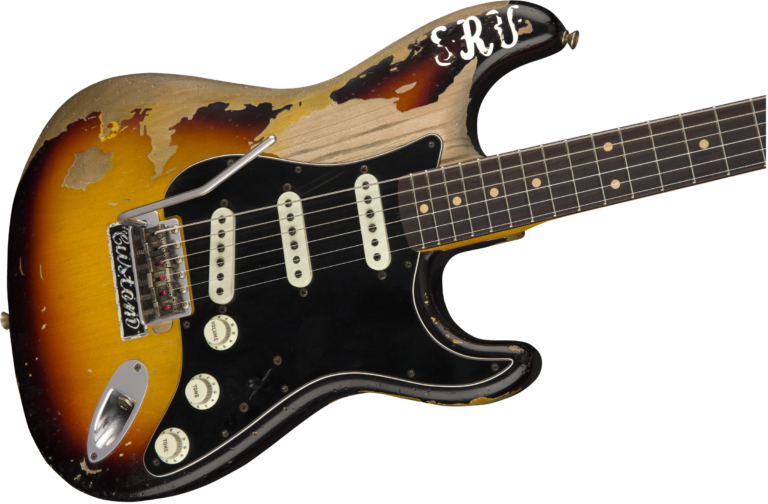
Pros and Cons of Guitar Relicing
With so many controversies trailing the practice of relicing guitars, one can’t deny that they’ve not heard advocates from both sides argue with valid points for and against the practice. On its fair side, relicers have been arguing strongly about how great relicing is, and here are some of the valid points that they’ve raised over time.
Pros
- Relicing makes the guitar feel better and less stiff
- It can make you feel like your favorite guitar legend
- It is a good way to bring a customized look to your guitar
- It can stand you out in an amazing way from other players
- Bring back exciting guitar memories
Cons
- Relicing takes away the possibility of bonding well with your guitar while allowing it to fade naturally
- You’ll just not get along well if you don’t love anything about faking
- Relicing cost some really big money.
Distressing Different Materials to Make the Guitar Look Old
One great thing about guitar relicing is that you can go as far as you want, without being questioned about your rational. For instance, you can either choose to be subtle, or to go extreme, depending on what works for you. You can be creative enough to personalize your design, or take a peep into the infamous book of Stevie Ray Vaughan to design something exactly like his highly desirable beat-up stratocaster, which amazingly functions well, despite its completely worn out look.
Well, we’ve mentioned before that look doesn’t make the sound any different.
To deliver the unique personality that you envy to your guitar, here are a few DIY distressing tips:
1. Aging the Wood
Ageing the body, neck, and headstock of the guitar is relatively easy. Relicers enhance vanish with fine grit sandpaper. It is quite easy, but will require a great deal of patience.
So where exactly do you distress?
Playing for longtime leads to natural wearing. You can look up images online, or just make a note of your playing style and all that it will do to different areas of your guitar, for instance:
- The part where you rest your hand on the body
- Either side of the string
- The neck part, where your fingers rub habitually
- The lower part, where you rest your arm while strumming a little below the pickups.
- Before starting, take off the metal parts. In fact, remove the neck completely, if possible.
You can go on to use a hair dryer to heat the parts you want look old, then use compressed air spray to quickly cool it. You may hear a crack at this point, don’t worry, it only shows that the process is working correctly.
2. Distressing the Metal
Distressing the metal can help you achieve a wowing effect, although it is always not necessary. If you want to, then the first thing is to get them off the body, before getting busy with creating damage. Use a stone or brick to hit the parts. Also, create a key to accumulate dirt. Scratches will also do fine to clear off the shiny finish.
You can use either of metal file, steel wool, or wet sandpaper to rub off the shine. The goal is to make the look as dramatic as possible. Don’t forget to constantly check progress go avoid going too far.
3. Distressing the Plastic
This is the simplest part of it. Just take off the plastic parts from the guitar and make random scratches using razor blades, screwdriver or scissors for dirt to be able to gather. Filing or sanding the top layer of the plastic can also make for a satisfying process.
2. Distressing the Metal
Distressing the metal can help you achieve a wowing effect, although it is always not necessary. If you want to, then the first thing is to get them off the body, before getting busy with creating damage. Use a stone or brick to hit the parts. Also, create a key to accumulate dirt. Scratches will also do fine to clear off the shiny finish.
You can use either of metal file, steel wool, or wet sandpaper to rub off the shine. The goal is to make the look as dramatic as possible. Don’t forget to constantly check progress go avoid going too far.
3. Distressing the Plastic
This is the simplest part of it. Just take off the plastic parts from the guitar and make random scratches using razor blades, screwdriver or scissors for dirt to be able to gather. Filing or sanding the top layer of the plastic can also make for a satisfying process.
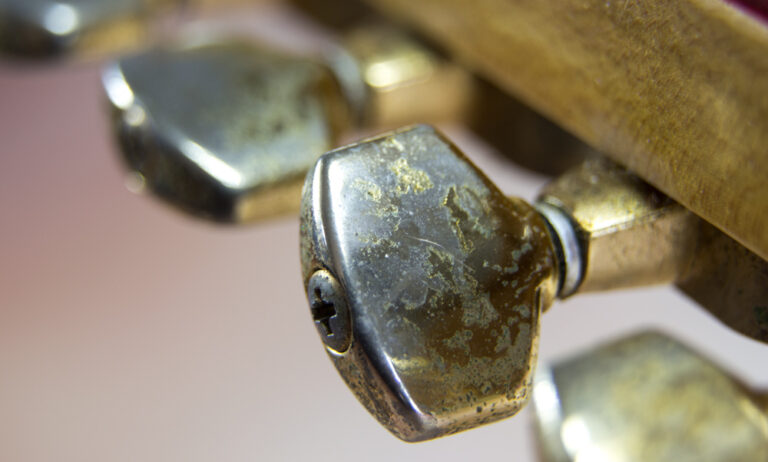
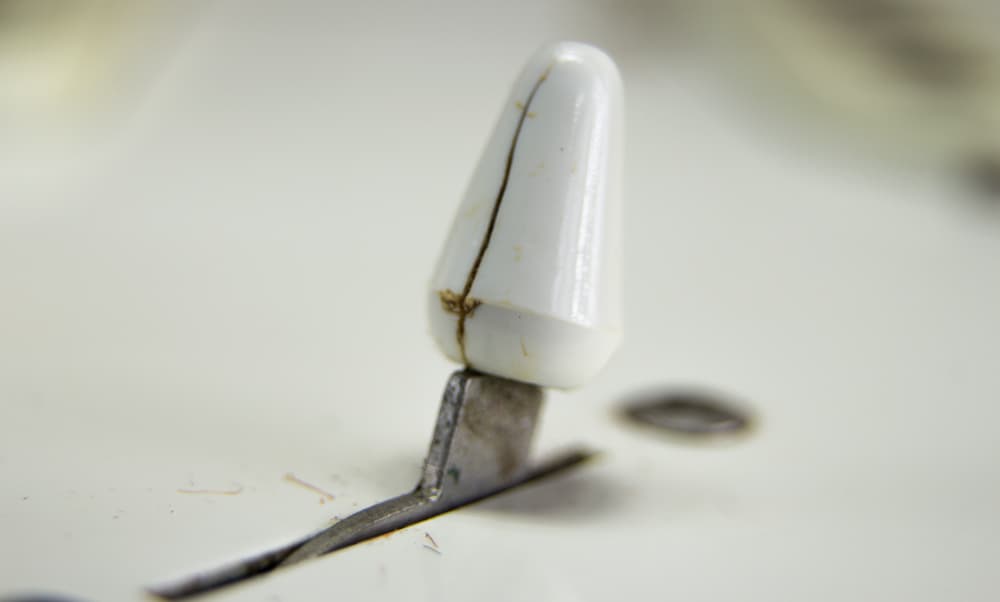
Tools, Techniques, and Materials
Converting Bakelite knobs and covers
- Hobby knife
- Sandpaper
- Fine toothed file
- Steel wool
- Paper clip
Working on the neck
- 150-320 grit sandpaper
- Good quality masking tape
- Plain toilet paper
Miniwax special walnut stain
Metal Relicing
- Metal pan
- Water
- White vinegar
- Mortons iodized salt
De-glossing the body
Natural wear
- Sandpaper
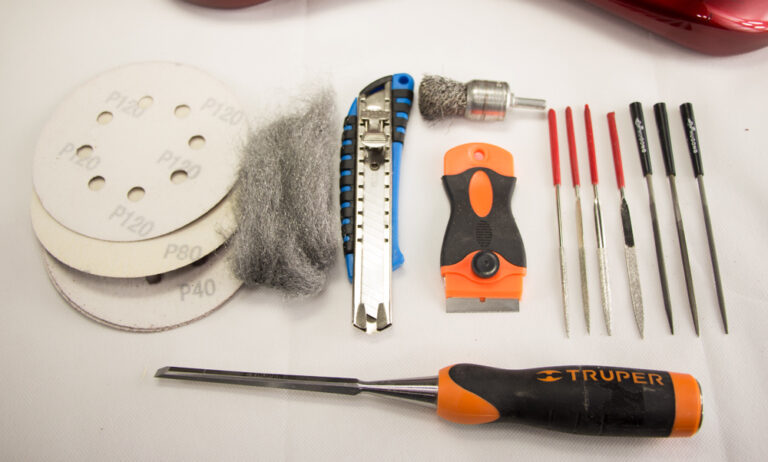
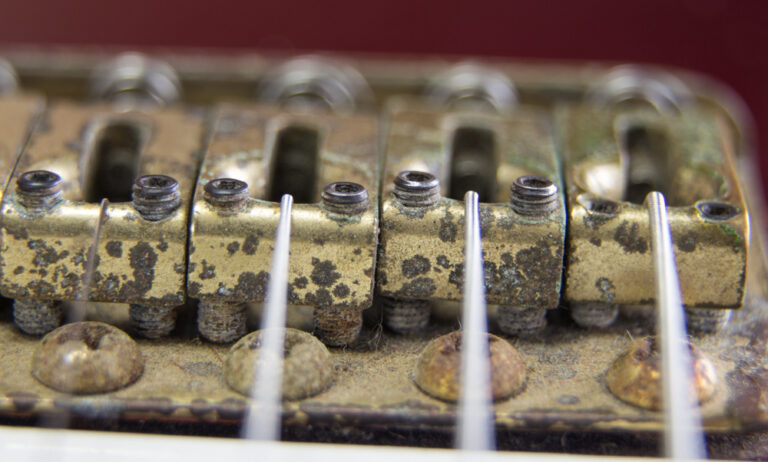
Related Questions
What finish does fender use?
Fender adopts the use of different varieties of materials as finish on its instruments. Some of the common finishes used by Fender includes: the nitrocellulose lacquer used a lot in the 50’s era of the company (This finish means a lot to vintage enthusiasts) and polyester finish which is more modern in look and functionality.
How Long Will a Guitar Last to Be considered Vintage?
Although an antique specifically refers to an object that has lasted more that 100 years, there’s no way to strictly define what makes an object vintage chronologically. However, in the case of guitars, it can be told that when the are up to 30 years old, they easily fall into the category, although we’ve seen sellers label even newer instruments as vintage.

